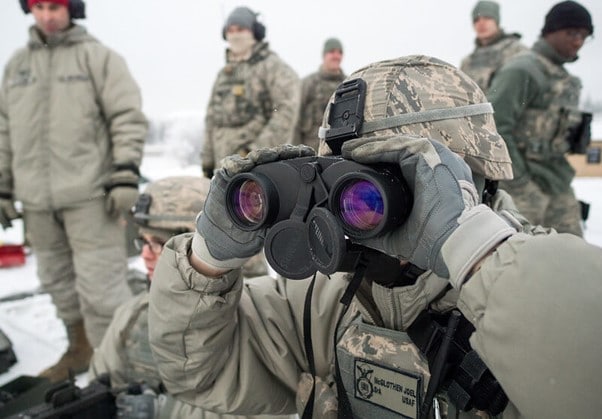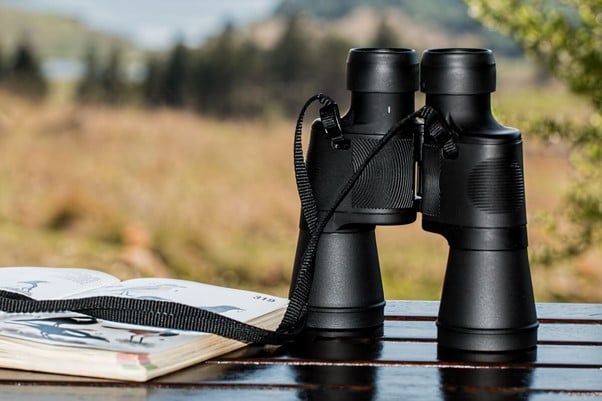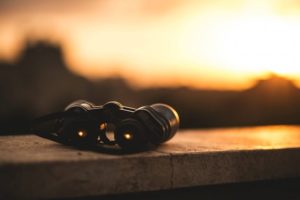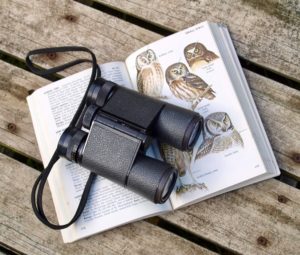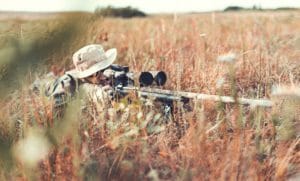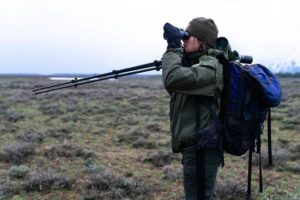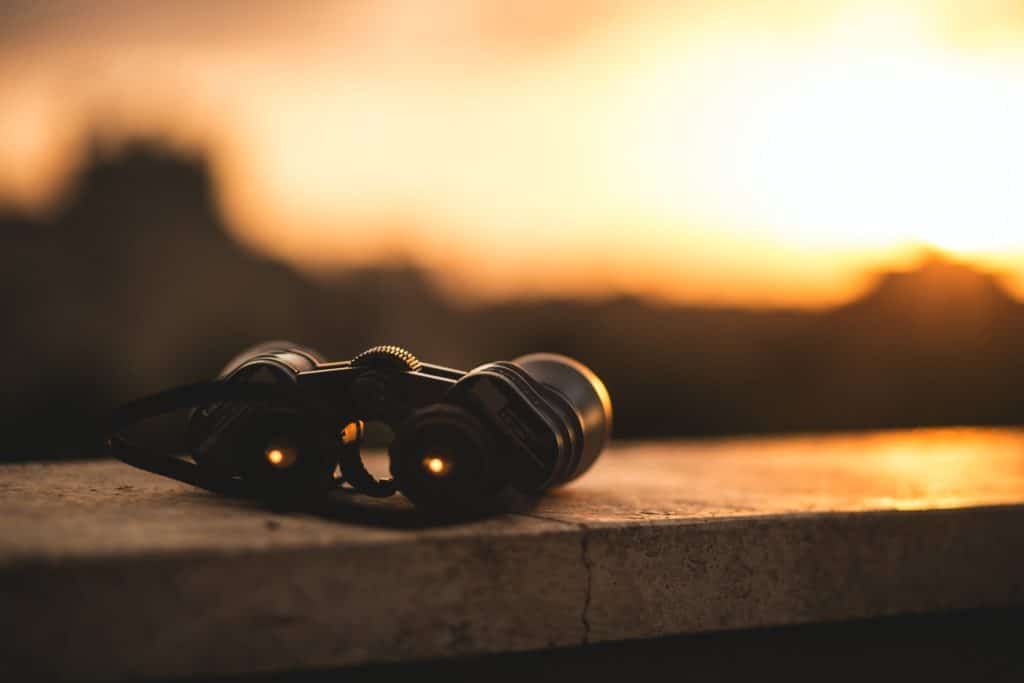This article includes affiliate links. If you choose to purchase any of the products discussed in this article, we may receive a small commission.
Best Military Binoculars
Binoculars are a crucial piece of kit within the military. Military binoculars must be able to withstand the harsh conditions a soldier faces.
As civilians, we use binoculars for a range of activities such as boating, bird watching, hunting, star gazing, and hiking. Some of the specifications we find in military-grade binos come in handy for these activities.
In this article, we discuss what to consider before buying military binoculars. We then review the best military binoculars available to civilians.
- Steiner MM830 Military - Marine 8×30 Binoculars
- Hooway Mentch 7×50 Military Marine Binoculars
- Steiner 2310 Night Hunter 8×56 Binoculars
- Steiner Commander 7×50 Binoculars
- No products found.
- Uscamel 10×50 Marine Binoculars
- Nikon Aculon A211 10x50 Binoculars
What to Consider Before Buying a Pair of Military Binoculars
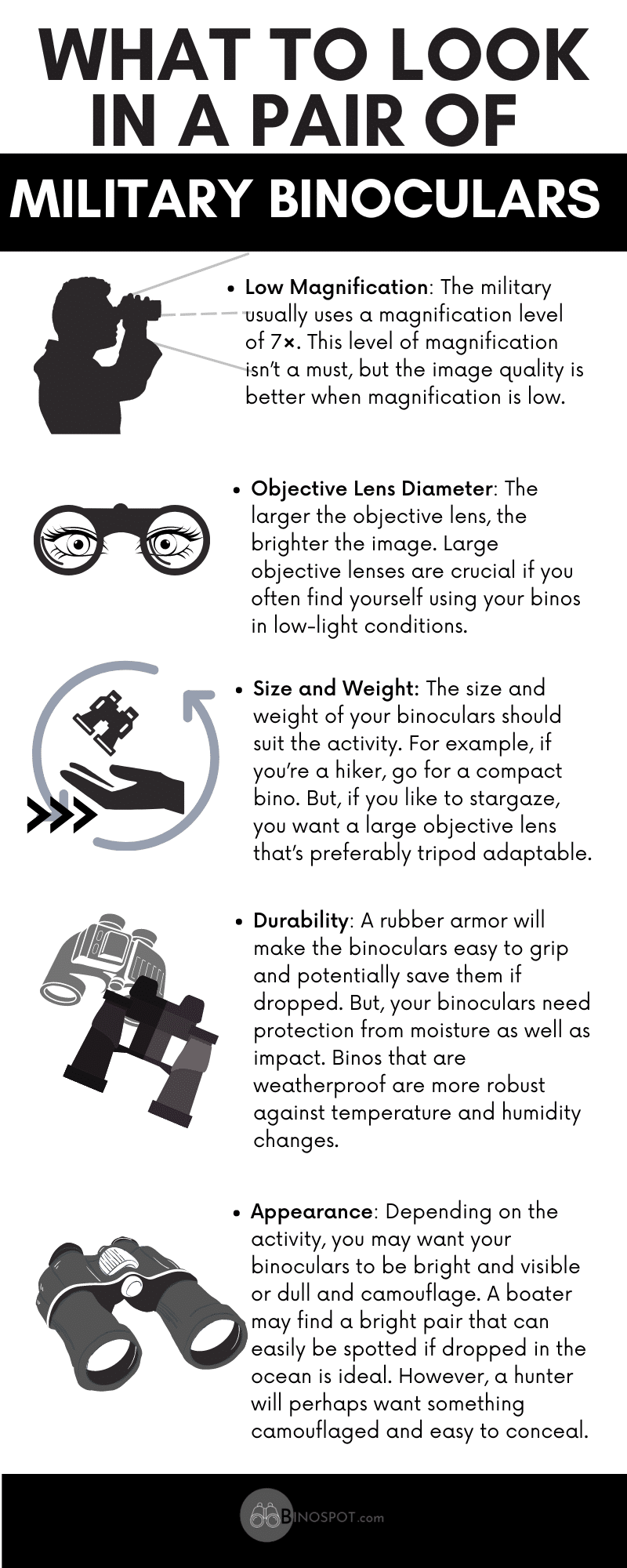
Before diving into our reviews, we discuss what to consider before purchasing military binoculars.
Magnification and Objective Lens
The magnification level indicates how many times larger the object will appear through the binoculars. Manufacturers usually write the magnification level on the focusing wheel with the objective lens diameter. For example, 7×50 means the binoculars have 7× magnification and 50-millimeter objective lens diameter.
Magnification impacts brightness, meaning the lower the power, the brighter the image. It also has an impact on the field of view (FoV).
The objective lens diameter determines how much light is collected by the binoculars. But, a large objective lens means a large pair of binos.
Size and Weight
There are three main binocular size categories; compact, mid-sized, and full-size. Sizes are categorized based on the diameter of the objective lens.
Compact Binoculars: less than 30mm.
Mid-sized: from 30mm to 40mm.
Full-size: anything above 40mm.
The army mainly uses three models; M22, M24, and M25. The M22 model has 7× magnification and a lens diameter of 50 millimeters. It’s considered the military ideal.
However, binoculars this size can impede your progress on a battlefield. For this reason, the military began using a lightweight version. The M24 7×28 is smaller and lighter, easily fitting into a pocket when not in use.
The M25 has 14× optics with a 40-millimeter lens diameter. These binos come with magnificent extra features like a miniature gyroscope for image stabilization.
But, the magnification level and the extras on the M25s are handy for soldiers but not necessarily needed by all civilians. So it depends on what you’ll be using the binos for and whether you mind the extra weight.
When looking for a pair of military binoculars, look for a compact set if you want something easy to carry on a long hike. Lightweight and compact models are also effortless to conceal.
However, mid-size models are more comfortable to hold for long periods. They also provide a brighter image, ideal for activities like birdwatching and hunting.
Full-sized pairs can be cumbersome, making them less than ideal in a tactical situation. But, the large objective lens diameter provides a wide FoV, and they perform better in low light conditions. They’re often tripod adaptable for long periods of use and image stabilization.
Field of View
The FoV is the maximum area you can view through the binoculars. The magnification is inversely proportional to the FoV, meaning that when one goes up, the other goes down.
With a pair of tactical binoculars, it’s crucial to have a wide FoV. A magnification of 10× or less is ideal, and it allows you to maintain a wide perspective.
Waterproofing and Fog-proofing
Water-resistance is measured using an IPX rating. The IPX rating works on a scale of zero to eight, where zero means that the binoculars aren’t waterproof and eight means they can be submerged.
Military binoculars need to be capable of withstanding all terrains. They’re also likely to be used in all weathers for long periods. For these reasons, it’s best to choose a pair of binos with a rating of five or above.
Binoculars unprotected against fog are susceptible to fogging during humidity and temperature changes. If moisture becomes trapped inside the binoculars, it can cause problems with viewing and long-term damage to your binos.
The manufacturer purges the air from binoculars and replaces it with nitrogen to make them fog-proof.
Eye Relief
Eye relief is the distance between your eye and the eyepiece lens. If you wear glasses, eye relief is crucial because the frames will force your eye to sit further away from the lens.
Most binoculars have adjustable eye relief, and the manufacturer will state the maximum in the specifications.
Some spectacle wearers may not need to use their glasses when looking through binoculars, making eye relief less crucial. If you wear your glasses continuously, aim for 15 millimeters of eye relief or more to prevent disruption to the FoV.
Coatings
Lens Coatings
Manufacturers coat lenses to reduce reflection and to enhance light transmission and contrast. You’ll see terms such as; coated, multi-coated, or fully-coated to describe the level of lens coating. Below are the explanations of each label.
Coated: One surface of the binocular lens has a single coating applied.
Multi-coated: Multiple surfaces have multiple layers of coating applied.
Fully multi-coated: There are multiple layers of coating applied to all surfaces. When the lenses are fully multi-coated, light transmission is enhanced significantly. It also reduces reflection and glare.
Prism Coatings
Coatings on roof prisms optimize light transmission and retain color fidelity. When light enters a roof prism, it’s split into two before recombining and forming the image. Without coatings, the light doesn’t recombine coherently, which causes a reduction in sharpness, brightness, and color fidelity.
Covering roof prisms in a silver or dielectric layer known as a phase-coating helps all colored light reach your eye simultaneously. The prism can then produce a sharp, crisp image.
These coatings aren’t needed in Porro prism binoculars because the light beam isn’t split, so the image stays coherent.
Prism Type
The prisms can affect the length and weight of the binoculars. They can also affect the brightness of the image. There are two main types of prism; roof and Porro.
Porro Prisms
Porro prisms offer a wider FoV than roof prism binoculars. The production of Porros is cheaper because their simple structure doesn’t require phase coating. However, the Porros offset design makes them cumbersome.
A variation of the Porro prism design is the reverse Porro prism. The reverse Porro prism allows the objective lenses to sit closer together. The reversal creates a more compact and lightweight pair of binoculars.
Roof Prisms
Roof prisms allow for a more compact design, making concealment easier.
However, they’re more susceptible to losing contrast because of the way the light splits as it moves through the prism path.
Manufacturers fix this issue by coating the prisms. Phase correction coatings help to increase color fidelity. But adding the phase coatings will also increase the cost of the final product.
Prism Material
Prism material affects image clarity. Cheaper binoculars often contain prisms made from BK7 glass.BK7 glass is a low-cost alternative to the superior BAK4 glass prisms, and binoculars with BK7 prisms are susceptible to blurring and chromatic aberration.
BAK4 glass can help prevent chromatic aberration. It’s a high-density glass that provides better optical quality. It also enhances light transmission in low light conditions.
Appearance
Appearance is another consideration when choosing a pair of military binoculars.
Binoculars with camouflage or dark exteriors will blend in better with your surroundings. But, you may want brighter housing if you’re using them at sea, so finding them won’t be difficult if you drop them.
If you’re using your binos for an activity such as hunting, a reflection from your binoculars could easily spook your target. Rubber armor is fantastic for protection. Rubber is also incapable of reflecting light and won’t alert your target to your presence.
Extra Features
Some binoculars offer extra features, such as night vision, rangefinder, and compass navigation. You may want to consider extra features depending on the activity.
Compass navigation is an excellent addition for a hiker, whereas a hunter would benefit from a rangefinder reticle. Wildlife enthusiasts may enjoy a night vision feature to view the nocturnal world.
Best Military Binoculars
1. Steiner MM830 Military – Marine 8×30 Binoculars – Overall Winner
Steiner MM830 binoculars are lightweight, and although they’re technically mid-size, they’re compact. Ideal if you’re on the move and don’t want to carry anything too cumbersome in your backpack.
There are many other sizes in this series, including a 7×50 model that’s perfect for nighttime viewing.
Steiner uses BAK4 prisms, and the optics are fully multi-coated. Designed to perform in all weather conditions as they’re waterproof and fog-proof.
The FoV on these 8×30 binoculars is 362 feet from 1000 yards. Steiner’s sports autofocus technology allows you to stay in focus from 20 yards and above. Images will remain sharp even if your subject is on the move.
However, autofocus is a misleading specification as you have to adjust the focus using the diopters. But, once you adjust the diopters to suit your vision, you won’t need to readjust unless your sight changes.
Eye relief is a staggering 20 millimeters which is more than enough for glasses wearers to feel comfortable for long periods.
Steiner uses a lightweight, durable Makrolon polycarbonate chassis and a Nitrile rubber (NBR) armored coating that can withstand 11Gs of impact.
A flexible silicone mount supports the lenses, allowing the absorption of severe shock without causing any damage.
There isn’t much to complain about with these binoculars. However, one person found the hinge was flimsy and broke when they tried adjusting the interpupillary distance. But, this may have been a faulty pair as this complaint isn’t widespread.
Pros
- Wide FoV.
- Long eye relief.
- Bak4 prisms.
- NBR rubber-armored coating.
- Lightweight
- Waterproof and fog-proof.
Cons
- Flimsy hinge.
2. Hooway Mentch 7×50 Military Marine Binoculars – Best Value
The Hooway Mentch military-grade binoculars feature a 50-millimeter optical lens with a 7× magnification. They come in a range of colors to suit different activities. So whether you want bright or camouflage, you’ll find your match.
These binos are well suited to boating activities as they’re fully waterproof, fog-proof, and float in water. They have a durable chassis covered in a non-slip rubber-armored coating. The Hooway Mentch is hefty, but they’re tripod adaptable making them easy to use for long periods.
With fully multi-coated optics and BAK4 Porro prisms, you shouldn’t have a problem getting a bright, clear image. They also have an excellent FoV at 396 feet from 1000 yards and an impressive 23-millimeters of eye relief.
The Hooway Mentch has an integrated rangefinder to determine the size and distance of an object. There’s also a built-in illuminated compass for location and direction.
These binoculars are great value for money. However, some customers were disappointed with the construction, stating that some parts, like the hinges and lens caps, were flimsy.
Pros
- BAK4 prisms.
- Wide FoV.
- Waterproof and fog-proof.
- Rubber armor coating.
- Integrated rangefinder and compass.
- Long eye relief.
- Great value.
Cons
- Weak construction.
3. Steiner 2310 Night Hunter 8×56 Binoculars
The Steiner 2310 Night Hunter binoculars combine a magnification of 8× with a huge 56-millimeter objective lens.
This combination gives you an extremely bright and clear view, even in low-light situations. It also creates a wide FoV, 441 feet from 1000 yards.
The optics are fully multi-coated to prevent reflection and glare, and the BAK4 Porro prisms transmit 100 percent light.
The 2310 binoculars feature an armored coating made from long-life NBR rubber, which is resistant to heat damage. They’re also fully waterproof and fog-proof.
These binoculars are lightweight in comparison to other full-sized models. This is due to the Makrolon polycarbonate chassis. However, they’re still heavy, especially if you want to use them for extended periods. They’re not tripod adaptable, though you can purchase universal tripods to overcome this minor issue.
This model comes with Steiners Ergo Flex eyecups, which offer extra comfort while blocking out any distractions from your peripheral vision. Unfortunately, the eye relief on these binoculars is only 7-millimeters which isn’t enough for some eyeglass wearers.
Pros
- Wide FoV.
- NBR armor.
- BAK4 prisms
- Fully multi-coated optics.
- Waterproof and fog-proof.
Cons
- Short eye relief.
4. Steiner Commander 7×50 Binoculars
The Steiner Navigator Pro 7×50 binoculars maintain focus from 20 yards to infinity. They have an impressive 438-foot FoV from 1000 yards and can perform in all weather conditions.
The binocular housing is temperature and impact-resistant, made from durable Makrolon polycarbonate that can withstand 11G of force. The NBR rubber armor coating is high-temperature bearing and provides a non-slip grip.
The Navigator Commander is heavy, weighing 37.9 ounces. They’re also quite bulky, typical of the Porro prism design. But, the advantage of using BAK4 Porro prisms outweighs its flaws, and the light transmission is excellent. The optics are also fully multi-coated to maximize light transmission and color rendition.
Eye relief is a fantastic 20.2 millimeters, excellent for eyeglass wearers. You can adjust the eyecups by folding them down. This can be awkward, but they’re comfortable.
On this particular model, there is an integrated compass. You can also purchase these binoculars without the compass or with a rangefinder.
Pros
- BAK4 prisms.
- Long eye relief.
- Wide FoV.
- Waterproof and fog-proof.
- Fully multi-coated optics.
- NBR rubber armor.
Cons
- Large and heavy.
5. Vanguard Endeavour ED 8×42 Binoculars
No products found.
The Vanguard Endeavor ED 8×42 binoculars are an excellent option if you’re on a tight budget. These BAK4 roof prism binoculars are phase-coated with fully multi-coated optics that improves light transmission.
Additionally, Vanguard uses ED glass lenses. ED glass should significantly reduce chromatic aberration and allow high contrast and clear viewing. But, some consumers have found that these binoculars still possess a level of chromatic aberration higher than expected.
The ergonomic open bridge design is easy to grasp. The chassis is lightweight magnesium, and it’s shrouded in a layer of rubber armor that protects against any drops.
The Endeavor EDs have a 367-foot FoV from 1000 yards. Eye-relief stands at 19-millimeters to give eyeglass wearers optimum comfort. These binos feature a large central focusing wheel with a lockable diopter, so adjustments only need making once.
This pair of binoculars are completely waterproof and fog-proof, ready for any intense weather conditions.
Pros
- Wide FoV.
- BAK4 phase-coated roof prisms.
- Long eye relief.
- Waterproof and fog-proof.
- Fully multi-coated optics.
- Excellent value.
- Rubber armor coating.
Cons
- Prone to chromatic aberration.
6. USCAMEL 10×50 Marine Binoculars
The USCAMEL marine binoculars have a 10x magnification and 50-millimeter objective lens. They have an impressive 396-foot FoV at 1000 yards.
The eyecups fold up for better viewing without glasses. However, eye relief is only 7.1-millimeters which may be too short for some spectacle wearers.
The BAK4 Porro prisms enhance color rendition. Optics are fully multi-coated to impede reflection and improve light transmission, image brightness, and sharpness.
Designed for harsh conditions, not only are they waterproof and fog-proof, but they also float. They come with an internal illuminated compass for direction and location. They also have an integrated rangefinder to help calculate the distance and size of an object.
USCAMEL state these binoculars have night vision, but this is a little misleading. Although they’re excellent in low-light they need a bit of light for the night vision function to work.
The USCAMEL binoculars are sturdy and coated in durable rubber armor that is shock-resistant and comfortable to hold. Unfortunately, the rugged build of this binocular makes them quite heavy, so it’s a relief to know they’re tripod adaptable.
Pros
- BAK4 prisms.
- Waterproof and fog-proof.
- Integrated rangefinder and compass.
- Good value.
- Fully multi-coated optics.
- Rubber armor coating.
- Wide FoV.
Cons
- Heavy.
- Short eye relief.
7. Nikon Aculon A211 10×50 Binoculars
The Nikon Aculon A211 is a great-value binocular with a 10x magnification level and 50-millimeter objective lens. The FoV is 341-foot at 1000 yards.
The contoured body of the binoculars has a shock-resistant rubber armor coating which makes them easy to grasp. They’re lightweight in comparison to many other full-sized binos. However, they can still be quite cumbersome, so the option to mount them on a tripod makes extended viewing easy.
These binoculars have a BAK4 prism system which helps provide clear viewing. They also have fully multi-coated optics that enhance brightness and resolution for sharp, crisp images.
The eyecups are a comfortable soft rubber ideal for extended viewing. But, eye relief is only 11.8-millimeters, which is disappointingly short for some glasses wearers.
Unfortunately, these binoculars aren’t waterproof. So if you’re planning on going boating, steer clear. However, they’re excellent for bird enthusiasts and stargazers.
Pros
- BAK4 Porro prisms.
- Fully multi-coated optics.
- Rubber armor coating.
- Great value.
- Decent FoV.
Cons
- Short eye relief.
- No water resistance.
FAQ
What Is a Rangefinder?
Rangefinders estimate the range between you and your target. There are two main methods that binoculars use to find the distance.
The first uses a reticle that scales the object and provides the information to help you work out the distance. The second method uses a laser that deflects off the target and automatically displays the distance.
Why Do the Military Use Low Magnification?
A low magnification produces a better quality image. As the magnification level increases, there’s a reduction in image quality.
What Is ED Glass?
ED glass stands for extra-low dispersion glass. ED glass aims to prevent or lessen chromatic aberration. It has a low refractive index which means that light dispersion is less than ordinary glass. This results in a sharp, high-contrast image.
Finally
Steiner is one of the leading manufacturers for producing military binoculars, and it clearly shows as they’ve dominated our list.
We chose the Steiner MM830 Military – Marine Binoculars as our overall winner. These binoculars are the perfect all-rounder, and we didn’t find much to criticize. However, if you’re on a tight budget, the Hooway Mentch 7×50 Military Marine Binoculars tick all the boxes, but they’re not as sturdy as the Steiner.

